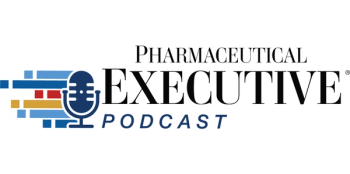"A 60-day review compresses uncertainty, improves internal alignment, and sharpens launch execution. Earlier market entry delivers substantial financial upside; in high-value markets, a six- to nine-month acceleration can generate $300 million to $2 billion in earlier or incremental revenue."
How the FDA Commissioner’s National Priority Vouchers Reshape Manufacturing, Pricing & Global Strategy
The FDA’s new Commissioner’s National Priority Voucher signals a transformative shift in U.S. drug review, tying accelerated approval to manufacturing readiness, domestic supply-chain strength, and credible affordability commitments, while redefining how companies must innovate, scale, and launch therapies in 2025 and beyond.
Editor's Note:
This is the first in a series providing industry expert perspectives on the implications of the CNPV program.
From Incentive to Operating System
For almost two decades, the Priority Review Voucher (PRV) has been a powerful, though relatively narrow, regulatory tool.
It was created to stimulate innovation in areas where commercial incentives were weak: tropical diseases, rare pediatric conditions, and medical countermeasures. A company that succeeded in such a space earned a voucher that could shorten the FDA review timeline for another therapy, often generating substantial financial value on the secondary market.
But the pharmaceutical world has changed dramatically. Drug affordability has become a national priority and pharmaceutical supply chains have revealed structural vulnerabilities.
Public health needs—obesity, antimicrobial resistance, oncology—have shifted toward massive, chronic conditions that require more than just scientific breakthroughs. They demand operational excellence, manufacturing resilience, predictable supply, and equitable patient access.
Against this backdrop, the FDA’s 2025 launch of the
What began as a clever policy lever has evolved into a new operating system for how companies must prepare, manufacture, price, and launch their products.
Where It Started: The Original PRV and Its Limits
The PRV program originated with a 2006 Health Affairs article by Duke professors David Ridley, Henry Grabowski, and Jeffrey Moe. They proposed a market-based incentive to reward the development of therapies for diseases with enormous global burden but limited commercial upside.
The logic was simple: if a sponsor brought a high-need, low-incentive therapy to market, they would earn a voucher guaranteeing faster FDA review for another product, reducing review timelines from ten months to as little as six. Congress codified the concept in the FDA Amendments Act of 2007, later expanding it through subsequent legislation.
Industry adopted it immediately. PRVs frequently sold for $125–$160 million, transforming regulatory speed into a tradable commodity.
Yet over time, the PRV’s structural limitations became increasingly clear:
- First, its eligibility criteria were narrow and did not align with the major public health needs faced by the United States. While it accelerated niche innovations in rare pediatrics, tropical diseases, and medical countermeasures, it did little to advance treatments for obesity, antimicrobial resistance, oncology, or chronic diseases that drive the bulk of U.S. morbidity and cost.
- Second, the PRV offered no incentive to strengthen U.S.-based manufacturing or improve supply-chain resilience. A company could earn, or simply purchase, a PRV while relying entirely on offshore, fragile, or single-source manufacturing networks. These vulnerabilities became painfully visible during COVID-19 and subsequent geopolitical disruptions.
- Third, the PRV had no requirements for chemistry, manufacturing, and controls (CMC) readiness or quality-system maturity. It rewarded speed but not operational capability. Sponsors often entered priority review with incomplete validation, weak analytical methods, insufficient comparability data, or immature quality systems. Not surprisingly, this contributed directly to the high number of FDA Complete Response Letters driven by CMC issues.
- Fourth, the original PRV was disconnected from affordability and patient access. A therapy accelerated by a PRV could launch at any price, with no expectation that patients, public programs, or private payers would be able to afford it.
- Fifth, regulatory acceleration could be bought, not earned. Because PRVs were fully transferable, companies that had never worked in rare pediatrics or tropical diseases could purchase accelerated review for high-value commercial assets.
- Sixth, the PRV was not well suited to modern therapeutic modalities. It predated complex biologics, cell and gene therapies, and mRNA platforms, all of which require exceptionally robust manufacturing systems.
- Seventh, the PRV offered no mechanism to improve national preparedness or security. It did not address shortages, API dependence, or domestic capacity for essential medicines.
Finally, the PRV’s impact on innovation became inconsistent. Over time, it incentivized voucher-seeking behaviors rather than sustained investment in areas of broad public health importance. It also exerted no influence on responsible pricing or equitable access.
Together, these limitations revealed an outdated incentive framework in need of modernization. The FDA required a more holistic mechanism, one that aligned scientific innovation, operational execution, and national priorities.
Why the CNPV Emerged: Califf’s Priorities, Makary’s Execution
The next-generation voucher model reflects themes that gained prominence during the tenure of FDA Commissioner Robert M. Califf (2022–2025). During this period, Califf repeatedly emphasized the urgency of strengthening the U.S. pharmaceutical ecosystem, particularly supply-chain reliability, manufacturing modernization, drug-shortage prevention, and equitable access.
He argued that future FDA pathways must reward not only scientific breakthroughs but also a company’s capacity to deliver therapies safely, reliably, and affordably at scale. These priorities helped shape the intellectual groundwork for a voucher that would connect accelerated review to operational readiness, supply chain resilience, and national public health benefit.
When Marty Makary became FDA Commissioner in early 2025, the agency translated those ideas into a concrete policy tool. On June 17, 2025, the FDA formally
Under Makary’s leadership, what had been a set of recognized regulatory needs became an operational mechanism designed to accelerate therapies that advance national strategic priorities. The CNPV is fundamentally different from the PRV.
Vouchers cannot be sold or transferred. It is awarded only to programs addressing significant domestic public-health impact.
It requires evidence of manufacturing and CMC readiness, demonstrated U.S. production capabilities, and affordability strategies aimed at improving patient access. With the CNPV, the FDA is not merely encouraging innovation, it is reshaping how companies prepare, build, price, and deliver critical therapies.
Manufacturing Readiness: The First Test of a Voucher-Ready Company
A 60-day review window demands exceptional manufacturing readiness. This is where many companies historically fall short.
In my analysis of FDA Complete Response Letters issued between 2020 and 2024, 74% cited CMC, quality, or manufacturing deficiencies—not clinical data—as the primary reason for non-approval. Recurring issues included incomplete process validation, inadequate stability packages, failure to demonstrate commercial comparability, weak analytical robustness, and inconsistent quality systems across internal facilities and CDMOs.
These challenges derail late-stage reviews and cannot be corrected in the compressed timelines associated with accelerated pathways. The CNPV essentially tells sponsors that if you want speed, you must eliminate these risks early.
Companies are responding by embedding manufacturing teams earlier in development, completing validation cycles before pivotal readouts, preparing comprehensive “voucher-ready” CMC documentation, conducting inspection-readiness exercises months ahead of submission, and tightening change-control discipline across global operations.
Manufacturing excellence is no longer a downstream compliance obligation, it is a strategic accelerator.
Rebuilding Supply Chains Around Speed and Sovereignty
One of the strongest signals embedded in the CNPV is support for U.S.-based manufacturing. This expectation is not symbolic; it is now a prerequisite for accelerated review.
Domestic production enhances resilience, reduces exposure to geopolitical risk, facilitates seamless inspection, and increases predictability in batch release. It also ensures the United States retains control over critical manufacturing capacity during public-health emergencies.
Companies are reconfiguring their supply chains accordingly, dual-sourcing APIs with at least one domestic supplier, securing U.S. fill-finish capacity, investing in modular and single-use manufacturing technologies, and building domestic capabilities for biologics, plasmids, and viral vectors.
Inventory strategy is being reimagined as well, with pre-positioned GMP lots, validated cold-chain lanes, and serialized, launch-ready product prepared ahead of approval. Many sponsors have created internal “voucher war rooms” to mirror the FDA’s cross-functional review model and accelerate real-time decision-making.
Affordability: A New Regulatory Expectation
The CNPV is the first FDA incentive that explicitly links affordability to accelerated review. Sponsors must demonstrate responsible pricing strategies, clear budget-impact modeling, affordability pathways for public programs, and access plans that reduce barriers for patients.
This is not a symbolic requirement. Review teams expect evidence that therapies receiving ultra-priority review will also be accessible in practice.
Companies are adjusting by launching at net, designing outcomes-based contracts pre-approval, maintaining international pricing integrity through confidential rebate structures, and developing comprehensive affordability frameworks for Medicare, Medicaid, and commercial payers. Affordability has become an integral component of regulatory readiness.
Global Strategy: When the U.S. Moves First
A CNPV can accelerate U.S. approval by six to nine months relative to other major regions, fundamentally altering global launch sequencing. Companies must synchronize labeling, artwork, manufacturing tech transfer, evidence-generation timelines, packaging decisions, and pricing strategy across markets.
Lower U.S. net prices tied to affordability commitments may influence international reference-pricing frameworks. Companies are therefore adopting more deliberate sequencing strategies, implementing confidential contracting, and using managed-entry agreements to maintain pricing flexibility globally.
Business development teams are also assessing assets for “voucher alignment” whether they demonstrate CMC maturity, domestic manufacturing capacity, and affordability credibility, factors that increasingly influence valuation.
The Strategic Value of the CNPV: Seven Interconnected Levers
Although the CNPV cannot be sold, its strategic impact may exceed the financial value of any traditional PRV. It provides seven interconnected value levers that materially alter a company’s competitive positioning.
A 60-day review compresses uncertainty, improves internal alignment, and sharpens launch execution. Earlier market entry delivers substantial financial upside; in high-value markets, a six- to nine-month acceleration can generate $300 million to $2 billion in earlier or incremental revenue.
First-mover advantage remains powerful, especially in obesity, oncology, immunology, and other competitive areas, in which early entrants often capture 50%–70% of lifetime market share.
U.S.-based manufacturing improves predictability, reduces operational and geopolitical risk, and strengthens regulatory trust. Affordability alignment enhances payer uptake, shortens access timelines, and reduces utilization-management friction.
Companies that demonstrate CMC excellence and affordability maturity earn regulatory goodwill that carries forward to future submissions and inspections. And together, earlier revenue realization plus lower execution risk drive materially higher net present value (NPV) and asset valuation, often by 20%–40%.
These levers explain why the CNPV may be strategically more valuable than any voucher that could be sold.
Becoming a Voucher-Ready Organization
The CNPV marks a turning point for the pharmaceutical industry. Speed is no longer something companies can buy, it’s something they must build. CMC excellence, domestic manufacturing strength, affordability discipline, and global coordination now determine who earns accelerated review.
Organizations that internalize these expectations will not only qualify for vouchers, they will define the future of pharmaceutical launches. The FDA’s message is unmistakable: Speed is not a commodity anymore. Speed is a necessary capability.
About the Author
Thani Jambulingam, PhD, is a professor of food, pharma, and healthcare business at Saint Joseph’s University’s Erivan K. Haub School of Business. He can be reached at tjambuli@sju.edu.
Newsletter
Lead with insight with the Pharmaceutical Executive newsletter, featuring strategic analysis, leadership trends, and market intelligence for biopharma decision-makers.






